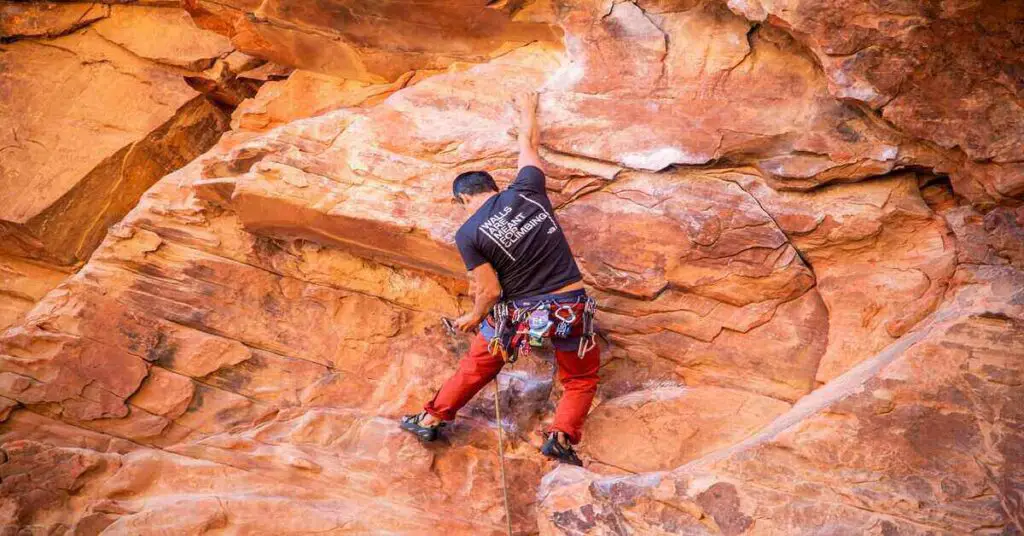Rock climbing is a sport that challenges the very limits of human capability. The challenge doesn’t just come from the difficulty of the movements, but also from the environment in which it takes place. Rock climbers need to be able to manage their fear, ability to withstand heights and exposure, as well as an understanding of all that goes into the sport. In this post, we will look at some comprehensive rock climbing tips that will help you enjoy the hobby more.
What is Rock Climbing?
Rock climbing is a sport that involves scaling rock formations. The climber makes use of a rope for protection in case he or she loses their balance, falls off, or is unable to climb any further. Though rock climbing can occur wherever there are sturdy rocks, popular sites include cliff faces and boulders. Climbers can be indoor climbers or outdoor climbers.
The Basics of Rock Climbing
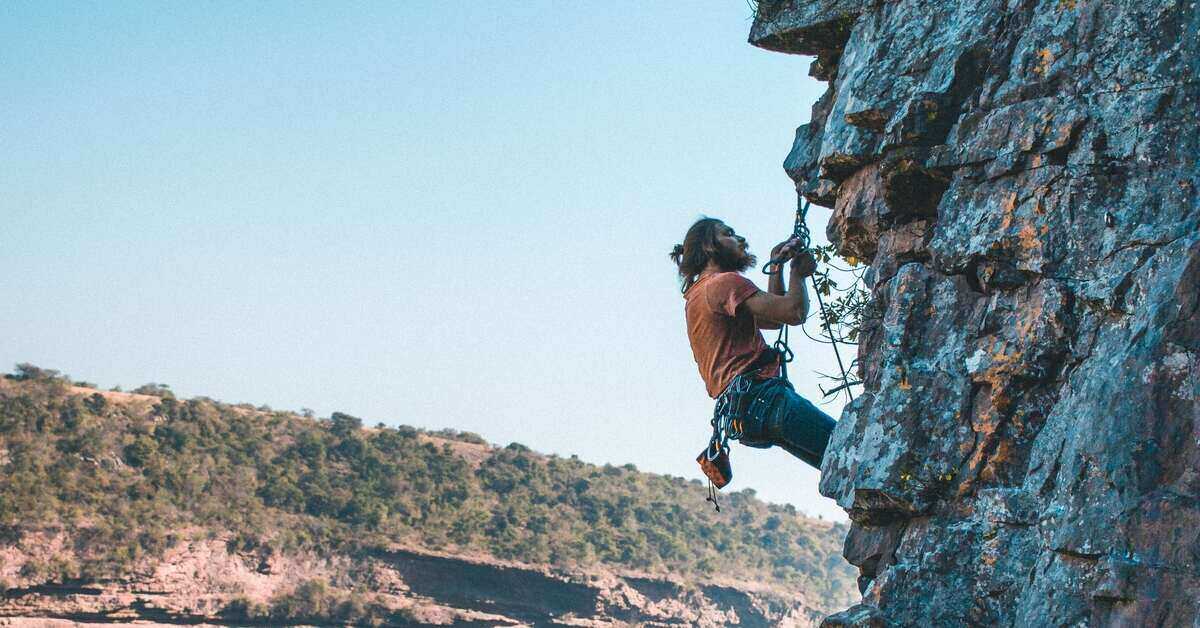
The biggest thing you need to do as a beginner is to have time, get good equipment, and find an instructor before attempting anything! Remember, there is no rush in learning how to rock climb. If you are just starting out, there are a few very important safety rules you should know:
- Never climb to the point where you cannot easily make it back to where you are standing.
- Always have a spotter watching over you at all times while climbing, even if you do not need it.
- Never climb higher than your anchor or tie into the same anchor as another climber who is above you.
- Use gear that works! Make sure your equipment is perfectly suited for what it is you are wanting to do.
- Before climbing, choose a partner who understands your skill level and will not rush you into anything!
- When rock climbing, make sure to tie in with the harness on correctly and know how to use all of your gear before you start having fun.
- In some places, it is illegal to climb without a helmet. Make sure to check the regulations of your climbing location.
- Always pack out what you packed in! Clean up after yourself and leave no trace behind. If there is trash around, pick it up so others do not have to!
How to Get Started with Rock Climbing
Before you start rock climbing, you need to be aware of the basics. This includes learning about how rock climbing works and understanding where it is appropriate to climb. It’s crucial to know that there are many different factors involved in rock climbing. The type of surface, rock quality, weather conditions all play a major role in rock climbing.
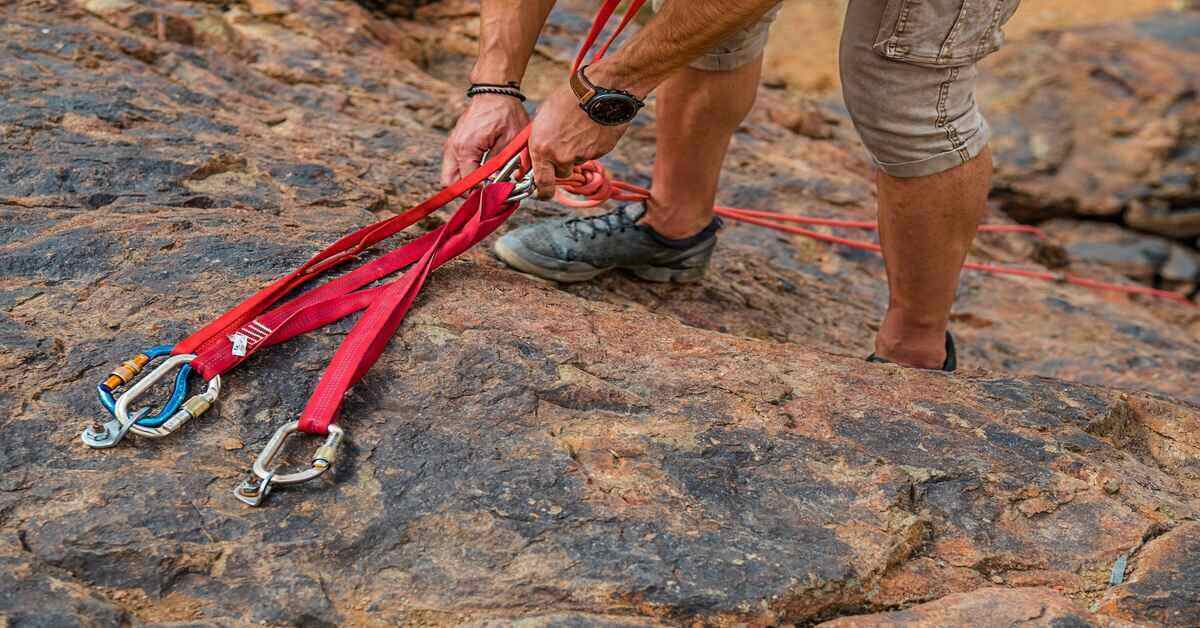
You’ll need to learn about safety when rock climbing since it’s a dangerous activity. The risk of death is present, but you can avoid it by using the proper safety gear and techniques. Once you know how to prevent accidents from happening, preparing for everything else becomes easy.
Another important component that every rock climber must learn is how to maintain a climbing rope. This not only keeps the rope in good condition, but it’s also helpful for avoiding accidents. A damaged climbing rope won’t be very useful if you’re rock climbing at a height of several hundred feet.
The basic equipment you need to have with you when rock climbing are: sturdy footwear, rock climbing gear, and a harness. You can use these three things as the foundation of everything else when it comes to rock climbing.
Tips for Indoor and Outdoor rock climbing
Here are some rock climbing tips for indoor and outdoor rock climbing:
Tips for Indoor rock climbing
Indoor rock climbing is something that almost every someone does. These are some good points to keep in mind when you are learning how to indoor rock climb
– Place your hands and feet where they match up with the grips. If your hand goes on a hold that is smaller than it, wrap it around so that the palm of your hand faces upwards. This will make it harder to get off and will result in better climbing.
– When you grab a hold, know that you are not just holding on with one hand or two hands, but rather the whole body is used in order to support the weight of your body. Just think about all those times when you were climbing up trees as a child and how it felt to use your whole body to climb.
– Avoid using your legs for extra grip, but they are needed when descending a rock face. You need them in order to stop from falling down and breaking your ankles or other bones.
– When you go climbing make sure that you know the ratings of every single section that you are about to climb and stick with it. If you are going to be doing harder routes then it is a good idea to take some time in order to practice or have someone who has done that kind of route before with you.
– Find out what kinds of harnesses they give you at indoor climbing gyms and make sure you know how they work. If the straps for the waist on your harness are in the front, you should not do any climbing that involves a lot of turns. The vest will just slide and you will fall.
Tips for Outdoor rock climbing
Outdoor rock climbing is tons more difficult than indoor rock climbing simply because there are no holds to always make sure that you will get to when you climb. If you are a beginner, the area near your house is probably not going to be the best place for you to go climbing. An experienced climber can help you find some popular sites.
– When going outdoors, it is best to go with someone who has a lot of experience. If you do go on your own, make sure that you know what the ratings of the routes are and stick with them.
– You need to be prepared for any situation when it comes to rock climbing outdoors, whether it is too cold or too hot, bring something to cover your hands and feet or even your whole body.
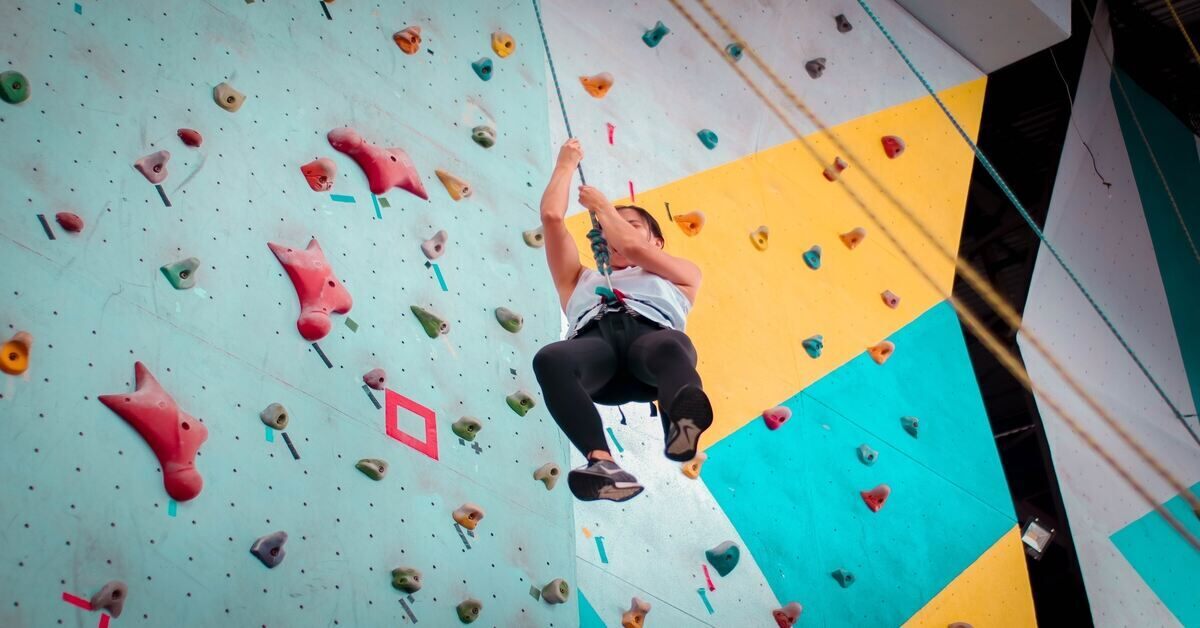
– Don’t be overconfident when rock climbing outdoors, it is easy to think that you can get up to the top fast and without any problems but most of the time there are going to be a lot more issues than you thought.
– Take anything that could possibly tear or break away from yourself, if not, you might just end up falling from the rock face.
– Notice everything around you when climbing outdoors because there are lots of dangers out there that could easily be missed if your head is not in it, to begin with.
Advanced Techniques in Rock Climbing
There are some advanced techniques in rock climbing that aren’t really that hard to do or even learn, but it takes a bit of practice and time.
Face the Wall
When you face the wall while climbing, your hips will be perfectly aligned so that you can make easier movements and avoid injury.
Pulling Positions
Any pull position is a pull done away from the wall. This allows you to keep your center of gravity over the feet and avoid tiring out too soon.
Laybacking
Laybacking involves using friction on both hands and feet in order to climb upwards. It is very similar to chimneying but unlike it, laybacking doesn’t use the whole body in order to climb.
Mantling
When mantling you are using friction on one hand and your feet so that one side of your body is facing outwards towards the rock face. This allows you to pull yourself up, simple as that.
Chalking
Make sure you know how to chalk properly because you can easily give yourself lots of rope burns if you don’t know how.
Cracks
In order to climb a crack, use your hands and feet as well as all of the muscles in both arms so that you can create the most friction possible. If you are using your legs then make sure you have something for them to push against so that your arms can rest.
Chimneying
When you are chimneying, use friction on both hands and feet as well as the legs in order to climb upwards. This is one of the most common techniques used for almost all rock climbing situations.
Using Holds
In order to use holds correctly, make sure that your center of gravity is close to the hold and that you are using all of your fingers and hands in order for you to stick on better.
Bouldering
This type of rock climbing doesn’t require any ropes or a harness but there are still some things that you should know first before attempting it. Usually, boulders are small hills of rock that one climbs using the hands and feet. Before you do start bouldering though, you should know what proper climbing technique is and how to be safe at all times.
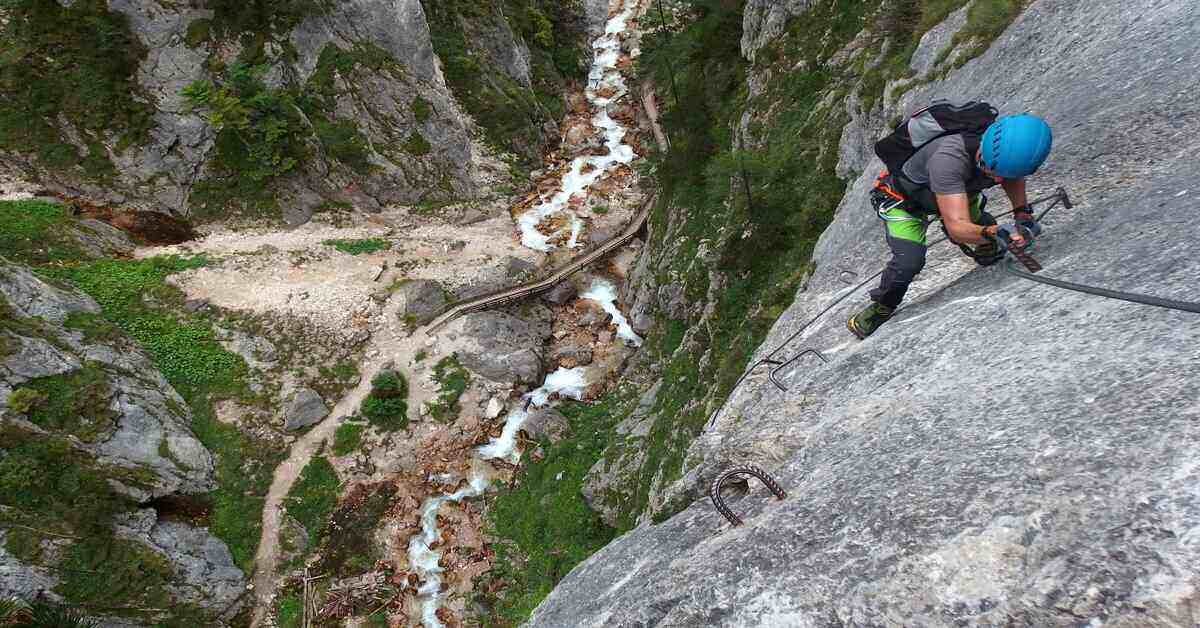
Top Rope Climbing
This type of rock climbing involves a rope attached from above to underneath the rock being climbed. Because ropes are involved, it is important to have one person who is usually the belayer and another person who goes up the rock face.
Lead Climbing
Lead climbing is similar to top rope climbing but instead of being attached underneath, there is just a rope that attaches from below with none on top because no climber would be going up it if there was. This is why it is important to learn the proper lead climbing techniques when attempting it for the first time.
Getting the Right Gear for your Climb
The right gear defines your experience. You can climb in the most beautiful location but with substandard equipment and it is going to be a miserable experience. Here are some essential rock climbing gear:
Harness
The harness is one of the most important pieces of rock climbing equipment. It tops your list of gear because safety first, right? Select a comfortable harness that fits you well with padding where necessary but is not too bulky or heavy. This will be an article to look for when choosing the right harness.
I would suggest going for a harness that is at least rated for an 8mm rope, just to make sure you have plenty of room to grow. The 10mm rating can be used as a rule of thumb if you are buying your first rock climbing gear set.
Rock Climbing Shoes
Your feet are your most important limbs. Get the right fit and style of rock climbing shoes when purchasing your first pair.
Climbing Rope
The rope is another vital piece of rock climbing equipment. It should be as new as possible, preferably without any kinks or wear. If they are not available at your local store then I would suggest going for the newest models within your budget and buying them online.
Chalk Bag
When climbing, hands produce sweat and this can be dangerous. Chalk bags hold chalk that climbers can occasionally dip their hands in and improve their grip. Since chalk bags easily spill and create dust clouds, experts recommend using chalk balls.
Helmet
Be safe! A helmet is an essential piece of rock climbing equipment that will protect you in any casual rock climbing fall.
Check out the best presents for outdoor lovers.
Climbing Socks
Wearing a good pair of socks is an important part of your rock climbing equipment and the difference between a good climb and a bad one in a lot of instances.
Get yourself a nice pair of climbing socks that would be suitable for your preferred style of rock climbing. There are plenty of styles out there to choose from with varying material, thickness, padding, etc. Get the best pair for you!
Rock Climbing Shoes
This is the most important piece of rock climbing equipment. Invest in a good pair that will serve you well for years and when you do own your first climbing shoes, take care of them!
These are just some of the rock climbing gear you need to get at the outset. You will have to buy more as you improve but for a first rock climbing set, I think these are the most important pieces of gear.
Why you should rock climb
Rock climbing is an activity with a very wide range of benefits. Rock climbing is not only good for your physical health, but it is also beneficial for your mental and emotional states. While rock climbing may be challenging, it can help you overcome obstacles in life. Check out the following reasons to start rock climbing today:
1. Strengthens your core
Rock climbing stimulates core muscles and provides a total body workout. The rock climbing techniques you learn will require you to engage the abdominal muscles, arm, leg, and back muscles. Rock climbers typically develop strong arms, shoulders, and backs with improved range of motion throughout their bodies due to these benefits.
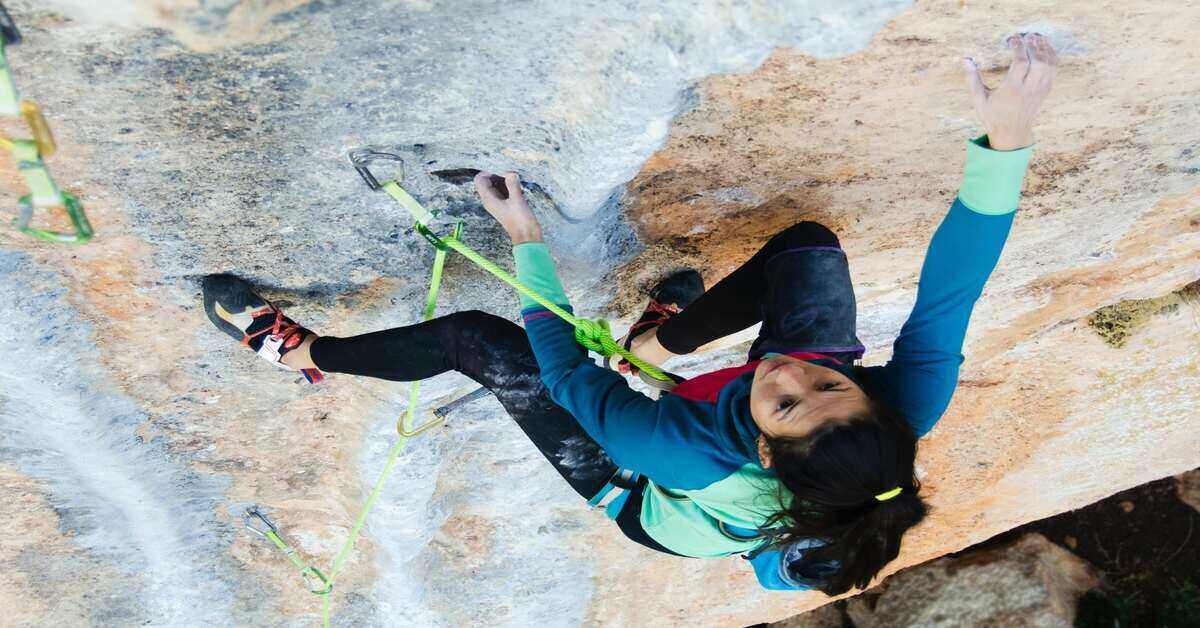
2. It is good for the heart
Rock climbing stimulates both the heart and lungs, helping to improve cardiovascular health. While rock climbing may be done indoors or outdoors, it can offer an aerobic workout which is recommended for good cardio health. Improving your cardiovascular conditioning helps to build endurance in other activities as well. The rock climbing tips you learn will make you more capable in a wide variety of outdoor activities.
3. Boosts balance and coordination
Rock climbing demands that you develop good balance and coordination with your body to successfully reach the top of the rock face. Learning to climb rocks is about more than strength, but it also requires quickness with your hands and feet while managing your body’s position on the rock.
4. Increases your confidence
Rock climbing encourages teamwork, risk-taking, and challenges you to achieve seemingly impossible feats. These are all strong confidence boosters to help build your self-esteem in other areas of life as well. As you improve your rock climbing skills, your self-confidence will develop and grow as well. Your increased sense of confidence can help you in all areas of life, including the business world, personal relationships, and more.
5. Improves your hand-eye coordination
Rock climbing is all about developing quick hand-eye coordination skills. You will need good hand-eye coordination to make decisions quickly, allowing you to successfully maneuver yourself on the rock face. These skills can be useful in your daily life and improve how you move through activities every day.
6. Improves your problem-solving skills
Rock climbing requires that you learn to solve problems quickly and effectively while on a narrow rock wall facing an obstacle with nothing but your climbing gear to help you make it through. The rock climbing tips and techniques that you learn will increase your problem-solving skills in other areas of life as well.
7. Improves your focus
Rock climbing requires total focus, allowing you to clear out any distractions from your mind while on the rock wall. These focused lessons can be useful in your life every day.
Note that signs of altitude sickness can appear during ascent, so you should be wary. If you feel that rock climbing is not your thing, explore other sports like mountaineering, heli-skiing, ice climbing, and so on.
As you can see, rock climbing is an adventurous sport and you stand to gain a lot from it. I hope the rock climbing tips above will help you enjoy the sport even more.

